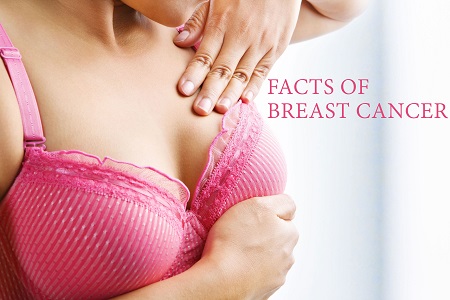Breast cancer is a dangerous ailment that has claimed the lives of many women over the years. These are some of the signs of breast cancer you should not joke with.

Illustrative photo
Most people know to look for lumps, but there are many other symptoms that you probably don’t know about.
With one in two people now getting cancer at some point in their lifetime, the threat is more evident than ever.
Breast cancer was the most common cancer worldwide in women contributing more than 25% of the total number of new cases diagnosed in 2012.
There were 53,696 new cases of breast cancer in the UK alone in 2013 and 11,433 deaths in 2014.
Thankfully due to increasing awareness and advances in treatment the survival rate is now 78%, but it’s important to catch it early.
While most people know to look out for lumps and bumps, there are a whole host of other warning signs that aren’t spoken about as often.
October is breast cancer awareness month and in a bid to raise awareness, here are nine early symptoms you should look out for:
1. Lump or thickening in your breast or armpit
2. Change to the skin of your breast
3. Changes in the shape or size of your breast
4. Dimpling of the skin or thickening in the breast tissue
5. A nipple that’s turned in (inverted)
6. A rash (like eczema) on the nipple
7. Nipple changes or discharge
8. Pain in your breast
9. Any other unusual or persistent changes to your breast
What should I do if I have any of these symptoms?
See your GP as soon as possible if you notice any symptoms of breast cancer. Your GP will examine you. If they think your symptoms need further assessment they’ll refer you to a specialist breast cancer clinic.
Don’t be worried about wasting your doctor’s time – it’s always better to be safe than sorry.
How is breast cancer diagnosed?
The most common way doctors look for breast cancer in women is to identify lumps in the breast. They most often do this with mammogram x-rays and sometimes an ultrasound scan – usually in women over 35.
These tests will detect whether there are any unusual lumps or bumps inside the breast. If they find anything worrying they will then do a biopsy, where a sample of tissue cells is taken from the breast to see if it’s cancerous.
You may also need a scan and a needle test on lymph nodes in your armpit (axilla) to see whether these are also affected.
If you do have a cancerous lump, your specialist will then decided the best corse of treatment.
How is breast cancer treated?
Due to medical advances there are now a whole host of different treatment options for breast cancer.
Depending on your exact diagnosis you may have a combination of any of the following: surgery, radiation, hormonal (anti-estrogen) therapy and chemotherapy.
There are also complementary and holistic medicines and techniques such as yoga and meditation, that can be given alongside stronger treatment.
****
Culled from Daily Star UK




